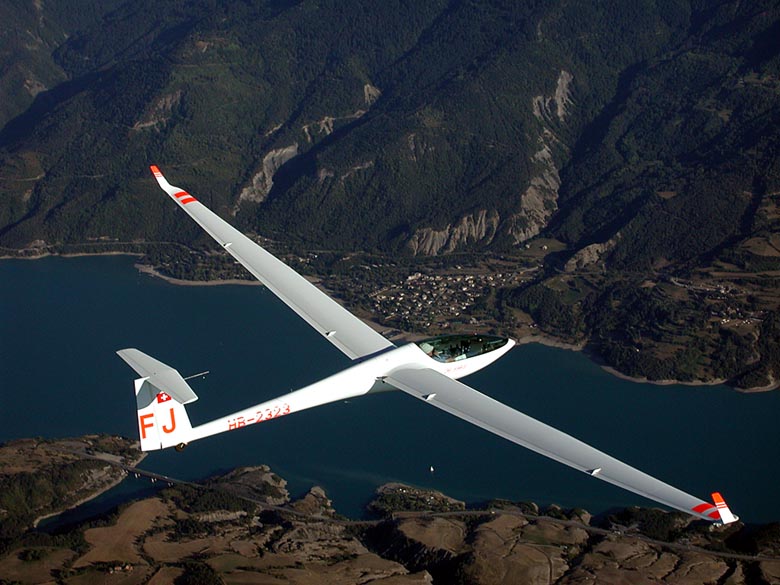Glider planes are airplanes with fixed-wings supported by the air’s dynamic reaction against its surfaces. Some gliders do not have an engine, and others have small machines to be used in extended flights when necessary. The history of aeronautics is an amazing one with man-carrying glider planes have been around since the 1800s, and technically, they have been the basis of the aircraft we know today. That is why in this article, we are going to learn more about the history of glider planes.
Glider Planes During the 19th Century
The first heavier-than-air, or non-balloon man-carrying airplane that was based on scientific principles was made by Sir George Cayley in 1849, and these aircraft managed to achieve brief wing-borne hops. After that, other pioneers such as Percy Pilcher, Jean Marie Le Bris, Otto Lilienthal, John J. Montgomery, and Augustus Moor started developing their own air crafts. Otto Lilienthal was the first to launch repeated successful flights, and he was also the first to use rising air to prolong the aircraft’s flight. On the other hand, Daniel Maloney successfully demonstrated the first high-altitude controlled flight by using a balloon-launched glider, which was launched from 4,000 feet.
After that, the Wright Brothers developed their own series of three human-crewed gliders after doing preliminary tests using a kite. The Wright brothers worked towards achieving powered flight utilizing this technique, and in 1911, the brothers returned to glider testing and removed the motor from one of their later designs.
The Innovation of the Glider Planes
During the inter-war years, recreational gliding became popular in Germany with the support of Rhön-Rossitten, a German gliding association. Meanwhile, in the United States, the Schweizer brothers of New York decided to manufacture sport sailplanes to meet the demands of flying enthusiasts. And throughout the 1930s, sailplanes continued to evolve, and sport gliding even became the primary use for gliders. The glider’s performance continued to improve over the years; in fact, gliders also used to fly cross-country if the weather is suitable.
During World War II, military gliders were developed by several countries for their landing troops. In fact, a glider called the Colditz Cock, was built secretly by POWs to be their potential escape method at Oflag IV-C towards the end of the war in 1944.
Flexible-Wing Hang Gliders
Foot-launched gliders have been around since the 1920s. However, its innovation, which eventually led to the modern hang gliders’ creation, happened in 1951. This innovation was made by Gertrude Rogallo and Francis Rogallo when they applied for a patent for creating a fully flexible wing that has a stiffening structure. In 1957, the American space agency, NASA, started tying in several semi-rigid and flexible configurations of the Rogallo wing so that they can use it as a recovery system for their Gemini space capsules.
Paul Bikle and Charles Richards also developed their own flexible-wing glider concept by producing an easy-to-built and straightforward wing but capable of gentle landing and slow flight. Sometime between 1960 and 1962, a man named Barry Hill Palmer used Bikle and Richard’s concept to create foot-launched hang gliders. This idea was followed by Mike Burns, who made a kite-hang glider in 1963, a contraption he named as Skiplane. During that same year, John W. Dickenson started the commercial production of flexible-wing hang gliders.
Paragliders
In 1963 Domina Jalbert decided to file a patent US Patent 3131894 on an aerodynamic cell contraption called the Parafoil. It had sectioned cells and an aerofoil shape with an open leading edge and a closed trailing edge. The Parafoil is inflated using a passage through the air, which they called the ram-air design.
On the other hand, NASA decided to develop the Sail Wing further to be used as a recovery vehicle of NASA space capsules. After the tests were done using a ridge lift on Hunter Mountain, New York, in 1965, a man named David Barish started to promote what he called the slope soaring as a summer activity for ski resorts, but he failed miserably. During the early 1960s, NASA decided to originate the term “paraglider.” And by the early 1970s, the term ‘paragliding’ was first used to describe gliding parachutes’ foot-launching. Even if the paragliders are mostly used in recreational activities, military personnel also used unmanned paragliders for military applications such as the Atair Insect.

